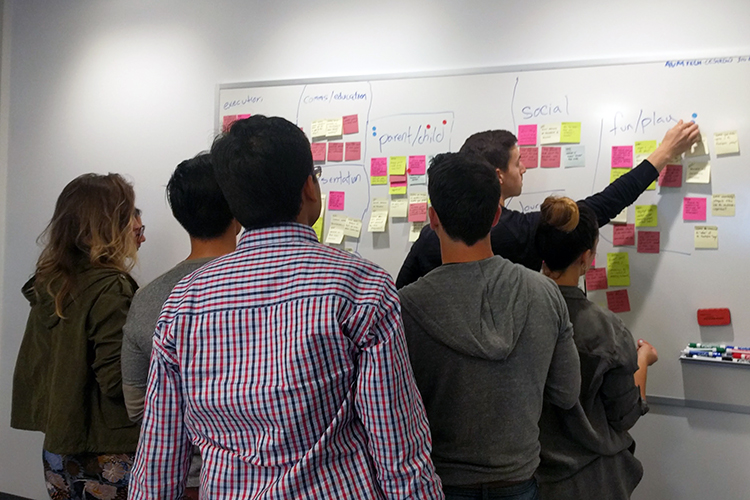In today’s competitive market, startup businesses that dawdle too long to get their product developed and their business launched, may not even get the chance to reach the market in the first place.
The reason behind this is the fact there’s a need to place a working product on the market while everyone else is still scratching their heads and stay ahead of the competition.
Make no mistake, it’s not about rushing in blindly just to get to the launch and failing afterwards. Instead, it’s about planning the rush carefully and launching successfully.
That’s where Google Ventures (GV) design sprint can help you out immensely, as it allows you to have a working product ready in days, instead of over thinking and planning for months.
FREE PDF: Get access to a free downloadable PDF version of this guide. Reference it anytime you want (or print for daily use).
Let’s check out what design sprint really is and how it works.
What is Google’s design sprint?
Google developed design sprint back in 2010. By working closely with Google Ventures over the years, they developed an effective framework that can help you answer the most important business questions, clearly define goals and have a working product ready for launch faster than ever.

This five-phase framework helps boost innovation, creative thinking and brings everyone together under the same vision. As mentioned, the framework consists of five phases:
- Understand
- Sketch
- Decide
- Prototype
- Validate
What’s more, this methodology encourages brainstorming which will produce various solutions and logical thinking that will help realize those solutions. All you need to do is assemble a cross-collaboration team that will help you come up with solutions, find ways to arrive at those solutions, decide on the best approach, create a working prototype and test it out.

Have a working product ready at the end of the design sprint: Build a prototype
Furthermore, the main reason you should adopt this framework into your startup early on is because this method helps you develop products much faster, as well as develop additional features for that product at the same time.
With collective minds working together toward the same goal, it’s much easier and faster to come up with a solution and have your startup launched on the market before anyone else.
How to set up the framework?
At this point, you should have at least five to seven people on your team, because smaller groups of people can focus on the same goal much more efficiently. It’s important to know that a design sprint lasts three to five days. That means you define the goal of what you want to create, then allow each member of your team to come up with their own solution on how to achieve that goal.
After that, both you and your team decide on the best approach and you start building a prototype. You can implement visualization and better structure sprint phases by introducing Kanban to the framework.

Google Design Sprint done for the Mediation App Headspace. Image Source: Google Ventures
However, you need to be on top of things to ensure that each member of the team is fully involved in each phase of the sprint to maximize its efficiency and that they avoid skipping any steps. Also, you can still use whiteboards in your sprint, but oftentimes you’ll work with remote teams, which requires a more digital solution.
That’s why implementing a cloud-based project management system that’s available to everyone will suit your digital startup. Moreover, this framework works well as a solution for bigger challenges like building a minimum viable product (MVP) and smaller projects, such as designing and developing additional features.
The importance of reporting
After the brainstorming phase, you and your team vote on the best approach and the best solution that will take you one step closer to the goal. That’s where you start building a working prototype that will be tested further.
To clarify, in the prototyping phase, you don’t need to build a fully functional prototype per se; you only need to map out elements you want to test and make them genuine enough so you can validate them. Think of it as testing a theory based on responses from your customers.
That’s why reporting is a crucial element. Each member of your team can pick at least five potential customers and let them user-test their prototype. The feedback your team members collect turns into reports of what’s working in the prototype and what isn’t.

Test your prototype with real users and drop everything that doesn’t work.
That information will give you a clear picture, when validating prototype’s functions and help you decide how to proceed. Since time is of the essence in design sprint, you should only focus on what works in your prototype and drop everything that doesn’t. This allows you to move forward at a faster rate than trying to fix everything in your prototype.
After all, the prototype is there to help you realize what your end-product has to become in order to be successful on the market.
The purpose of design sprint is to get you closer to a working product faster.
Design sprint framework is meant to help you focus on a business problem you want to overcome and help you solve that issue in a matter of days instead of months or years. It also helps you take on any challenge in a fast and reliable way, and have your startup reach success in no time.
About the author

Oscar Waterworth is a digital nomad, huge web and tech enthusiast, blogger and avid gamer. He has huge interests in digital technologies ranging from product development to interactive design and search engine algorithms.


